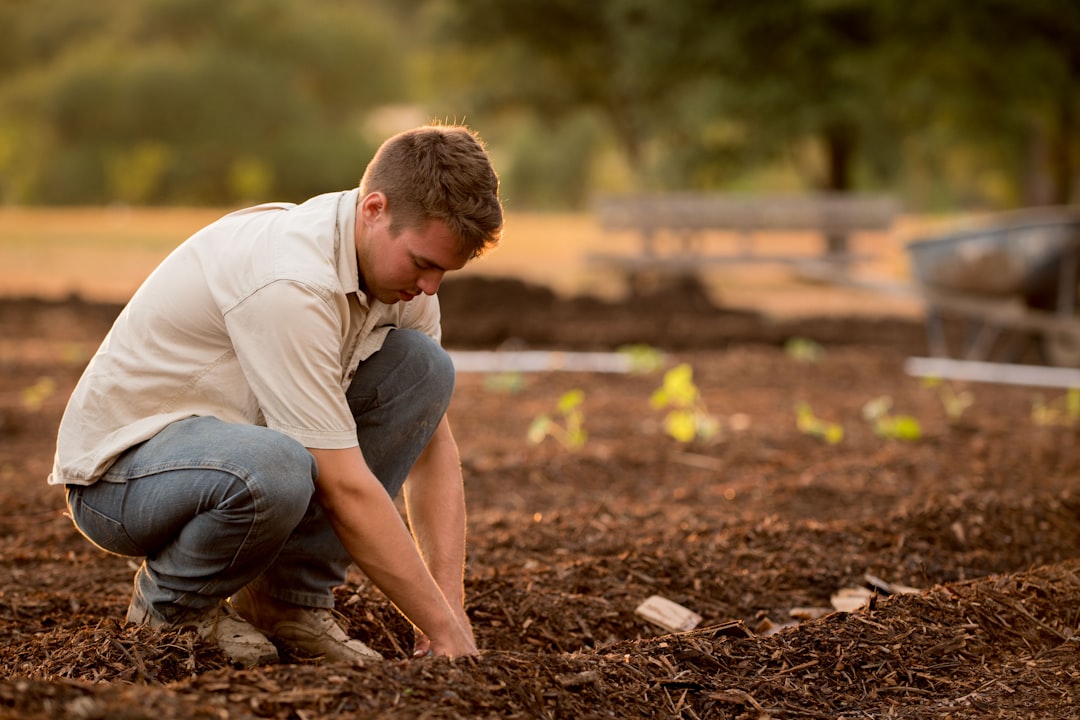10 Essential Garden Maintenance Tips for Every Season
Introduction
Gardening is a rewarding hobby that beautifies your environment, provides fresh produce, and can improve mental health. However, maintaining a healthy and vibrant garden requires effort and knowledge, especially as the needs of your garden change with the seasons. Whether you’re tending to a sprawling yard or a modest balcony garden, understanding the essentials of garden maintenance throughout the year is crucial. In this blog, we’ll explore ten essential garden maintenance tips that cater to each season, helping your garden thrive all year round. From preparing your garden for the changing weather to specific tasks that keep your plants healthy, these tips are designed for gardeners of all experience levels. Stay tuned and transform your garden into a year-round oasis!
Understanding the Importance of Garden Maintenance
 Image courtesy: Unsplash
Image courtesy: Unsplash
Maintaining your garden is just like taking care of your home; it requires attention, planning, and regular upkeep to flourish throughout the year. Whether you’re nurturing delicate flowers, growing vegetables, or preserving a lush green lawn, each task you perform plays a pivotal role in the health and appearance of your garden. Regular garden maintenance not only helps in creating an aesthetic appeal but also supports the biodiversity of the environment, providing a habitat for various creatures.
Why regular maintenance is crucial for a thriving garden
Regular garden maintenance ensures that plants have the best conditions to grow by managing soil health, controlling pests, and preventing diseases. It helps in the efficient use of water and nutrients, making your garden more sustainable and environmentally friendly. Additionally, it encourages plant growth and flowering, which can significantly enhance the natural beauty of your space. By engaging in ongoing care, you prevent potential problems from becoming more severe, saving time and resources in the long run. Most importantly, it keeps your garden a welcoming and relaxing retreat throughout the year.
Spring Garden Maintenance Tips
Spring is a critical time for gardeners, with new life springing up and the remnants of winter still visible. This season calls for specific tasks that prepare your garden for the warm months ahead.
Tip 1: Preparing the soil for planting
Before you begin planting, preparing your soil is essential to ensure your plants have all they need to thrive:
– Clean up your beds: Remove any dead plants, leaves, and other debris. This not only tidies up your garden but also prevents the spread of disease.
– Test your soil: Understanding your soil’s pH and nutrient levels is crucial. Depending on the results, you might need to amend your soil to provide the best growing conditions.
– Add compost or fertilizer: Enrich your soil by adding compost or a balanced fertilizer to boost nutrient levels, which is particularly crucial for demanding plants like vegetables and flowering annuals.
– Till or turn the soil: This helps integrate the organic materials and loosens the soil, allowing roots to penetrate more deeply and easily.
Tip 2: Pruning and trimming shrubs and trees
Spring is an ideal time for pruning many shrubs and trees, as it encourages healthy growth and flowering:
– Remove dead or diseased branches: This helps prevent the spread of diseases and pests to other parts of the plant or garden.
– Shape plants: Trimming and shaping plants not only maintains their appearance but also promotes more balanced growth and flowering.
– Prune spring bloomers after flowering: For shrubs and trees that bloom in spring, wait until their flowering period is over to prune, allowing them to showcase their beauty while still preparing them for next year.
By following these essential garden maintenance tips in spring, you set a solid foundation for a healthy, vibrant garden that will bring joy all year round.
Summer Garden Maintenance Tips
Tip 3: Watering your garden effectively
In the summer heat, your garden’s thirst goes up dramatically. Effective watering techniques can mean the difference between a thriving garden and a wilted one. Water your garden early in the morning or later in the evening when temperatures are cooler. This reduces evaporation and ensures that the water soaks deeply into the soil, reaching the roots where it’s most needed. Consider using soaker hoses or a drip irrigation system to deliver water directly to the base of the plant. This not only saves water but also helps to prevent the spread of leaf diseases that can occur when foliage remains wet for an extended period.
Tip 4: Controlling pests and diseases
Summer is peak season for pests and diseases in the garden. Regularly inspect your plants for signs of trouble, such as unusual spots on leaves, wilting, or stunted growth. Early detection is key in managing garden pests and diseases effectively. Use natural remedies like neem oil or insecticidal soap to handle outbreaks. Encourage beneficial insects, like ladybugs and bees, which help control pest populations naturally. Always remove infected plant debris from your garden to prevent diseases from spreading and dispose of them properly, not in your compost pile.
Fall Garden Maintenance Tips
 Image courtesy: Unsplash
Image courtesy: Unsplash
Tip 5: Cleaning up garden beds and removing debris
As the season winds down, it’s important to clean up your garden beds. This not only prevents disease but also sets the stage for the next growing season. Remove old plant material and weeds that can harbor pests and diseases over the winter. Rake up fallen leaves and add them to your compost bin or use them as a protective mulch. This cleanup is essential in preventing fungal diseases and keeps your garden looking tidy.
Tip 6: Planting for the next season
Fall is the perfect time to plant bulbs, such as tulips and daffodils, which require a cold period to bloom in spring. It’s also ideal for planting perennial flowers and vegetables like garlic that will be ready to harvest next year. Consider adding shrubs and trees to your landscape; the cool fall weather helps roots establish before the stress of summer heat. Enhance your soil by mixing in compost or manure to provide nutrients for these new additions. Planning and planting in fall can give you a jump start on spring and ensure a lush, healthy garden.
Winter Garden Maintenance Tips
Tip 7: Protecting delicate plants from frost
Winter can be brutal for the delicate plants in your garden. To shield them from harsh frost, it’s essential to provide proper insulation and protection. One effective method is to use frost cloths or burlap wraps on your plants before the temperatures start to plunge. Place mulch around the base of plants to help retain heat and moisture in the soil. You might also consider moving potted plants indoors or into a greenhouse. Remember, the key is to keep the plants shielded from direct exposure to frost, which can cause tissue damage and inhibit growth.
Tip 8: Maintaining garden tools and equipment
During the colder months, when garden activities might slow down, take the opportunity to maintain your gardening tools and equipment. Clean all tools to remove dirt and rust, oil moving parts to prevent them from seizing, and sharpen blades to ensure they’re ready for spring. It’s a good idea to drain fuel from power tools and store batteries in a cool, dry place. Organizing your tools, repairing any damages, and ensuring everything is in good working order can not only extend the life of the equipment but also make your gardening more enjoyable and less cumbersome when the busy season returns.
Year-Round Garden Maintenance
Tip 9: Fertilizing and feeding your plants
Feeding your garden is crucial for its overall health and productivity, regardless of the season. However, the type and frequency of fertilizer you use should be tailored to the specific needs of your plants and the current season. Generally, a slow-release granular fertilizer works well as it feeds plants over time rather than all at once. During the growing season, higher concentrations of nitrogen help foliage growth, while phosphorus and potassium are beneficial closer to the blooming and harvesting periods. It’s critical to avoid over-fertilizing, which can lead to poor plant health and environmental runoff. Test your soil periodically to understand its nutrient needs and adjust your fertilizing practices accordingly.
Tip 10: Monitoring and adjusting garden care routines
Continuously monitoring your garden and being flexible enough to adjust your maintenance routines are keys to year-round garden success. Observe the health of your plants, looking for signs of stress or disease early. Pay attention to changes in weather patterns and adapt your watering schedule to meet plant needs without overwatering. For example, watering needs can significantly vary from the hot summer months to the colder, potentially wetter winter months. Keep an eye on pest activity and manage invasions with appropriate, environmentally friendly solutions. Logging your observations can help you track the effectiveness of your gardening strategies and make informed adjustments over time. Tailoring your approach to the evolving needs of your garden not only ensures its health but also enhances its beauty and productivity throughout the year.
Conclusion
When it comes to garden maintenance, remembering these seasonal tips can significantly enhance the beauty and productivity of your space year-round. Consistency is key—whether it’s pruning back in the fall, protecting plants in the winter, nourishing the soil in spring, or watering diligently in the summer. One final piece of advice: enjoy the process. Your garden is not just a space but an evolving sanctuary that flourishes with every bit of care and attention you give it. Happy gardening!

